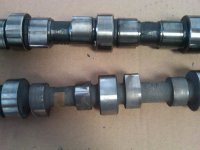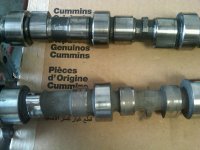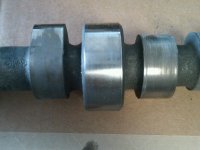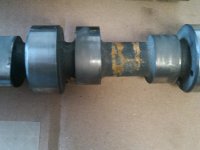:badidea:
See what happened was, that when all the new trucks required new emission standards, the oil needed to be changed to a CJ rating.. Unfortunately the CJ rating removed more than half of the sulfated ash content, and quite a bit of the zinc as well.. what this leaves us with is junk.. an oil with no ability to neutralize combustion chemicals and poor load bearing and sheer qualities.. Find a CI or lower rated oil and buy it and use it.. add a bottle of zinc every oil change. if you can find it use Lucas 15w-40 high TBN oil, it is CI rated and has high total base number.. rotella has been proven to cause ISB rocker shaft scuffing in an industrial application, never mind a performance application..$.02
I put the helix in at xmas/new year of '09 with 240k miles on my truck. why did the stock cam look brand new with NO flaws/scratches/heat marks, no nothing(i will have pic's to compare tonight). I dont see how my stock cam was pristine and my helix with ONLY 8k miles on it looks horrible. why are the lobes on the helix cam so narrow compared to stock cam? with such a narrow surface on cam lobe and wider tappet surface wouldnt that be an issue? i dont see how oil would protect my stock cam for over 240k miles and destroy another cam within 8k miles?




